Abstract
Experiments were conducted to characterize the distribution of N compounds in the xylem sap of nodulated and nonnodulated soybean plants through development and to determine the effects of exogenous N on the distribution of N compounds in the xylem. Xylem sap was collected from nodulated and nonnodulated greenhouse-grown soybean plants (Glycine max [L.] Merr. “Ransom”) from the vegetative phase to the pod-filling phase. The sum of the nitrogen in the amino acid, nitrate, ureide (allantoic acid and allantoin), and ammonium fractions of the sap from both types of plants agreed closely with total N as assayed by a Kjeldahl technique. Sap from nodulated plants supplied with N-free nutrient solution contained seasonal averages of 78 and 20% of the total N as ureide-N and amino acid-N, respectively. Sap from nonnodulated plants supplied with a 20 millimolar KNO3 nutrient solution contained seasonal averages of 6, 36, and 58% of total N as ureide-N, amino acid-N, and nitrate-N, respectively. Allantoic acid was the predominant ureide in the xylem sap and asparagine was the predominant amino acid. When well nodulated plants were supplied with 20 millimolar KNO3, beginning at 65 days, C2H2 reduction (N2 fixation) decreased relative to nontreated plants and there was a concomitant decrease in the ureide content of the sap. A positive correlation (r = 0.89) was found between the ureide levels in xylem sap and nodule dry weights when either exogenous nitrate-N or urea-N was supplied at 10 and 20 millimolar concentrations to inoculated plants. The results demonstrate that ureides play a dominant role in N transport in nodulated soybeans and that the synthesis of ureides is largely dependent upon nodulation and N2 fixation.
Full text
PDF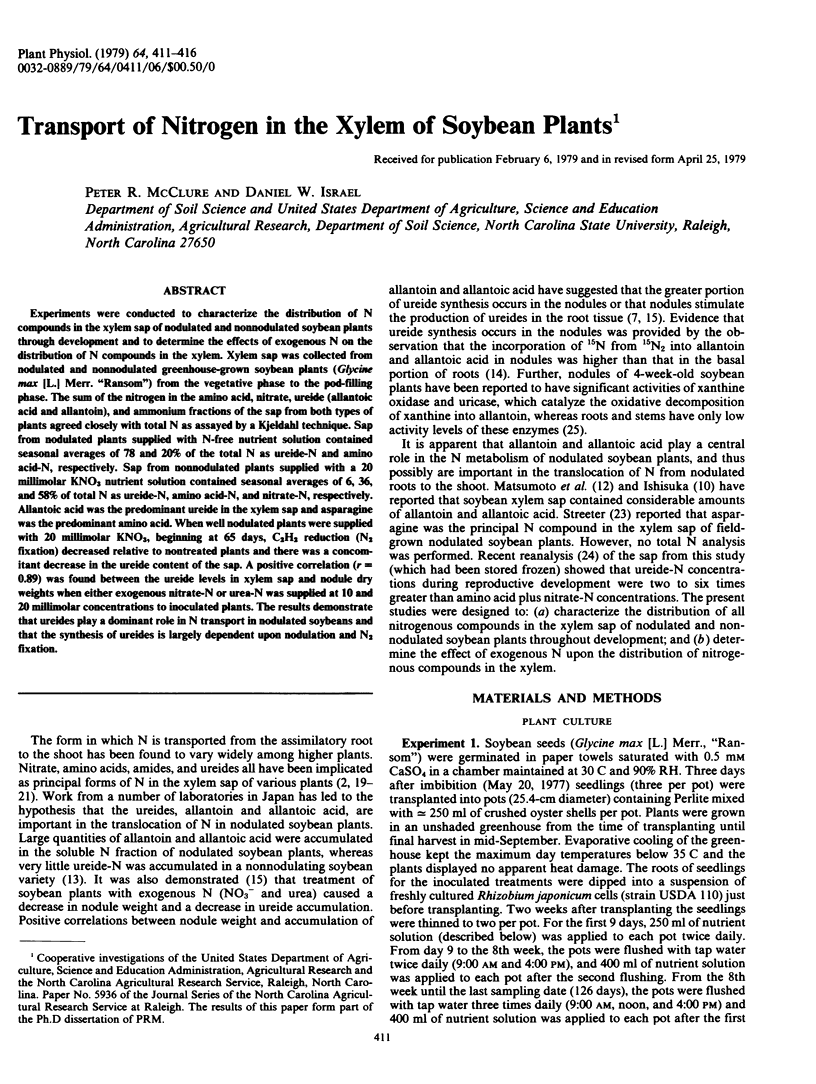
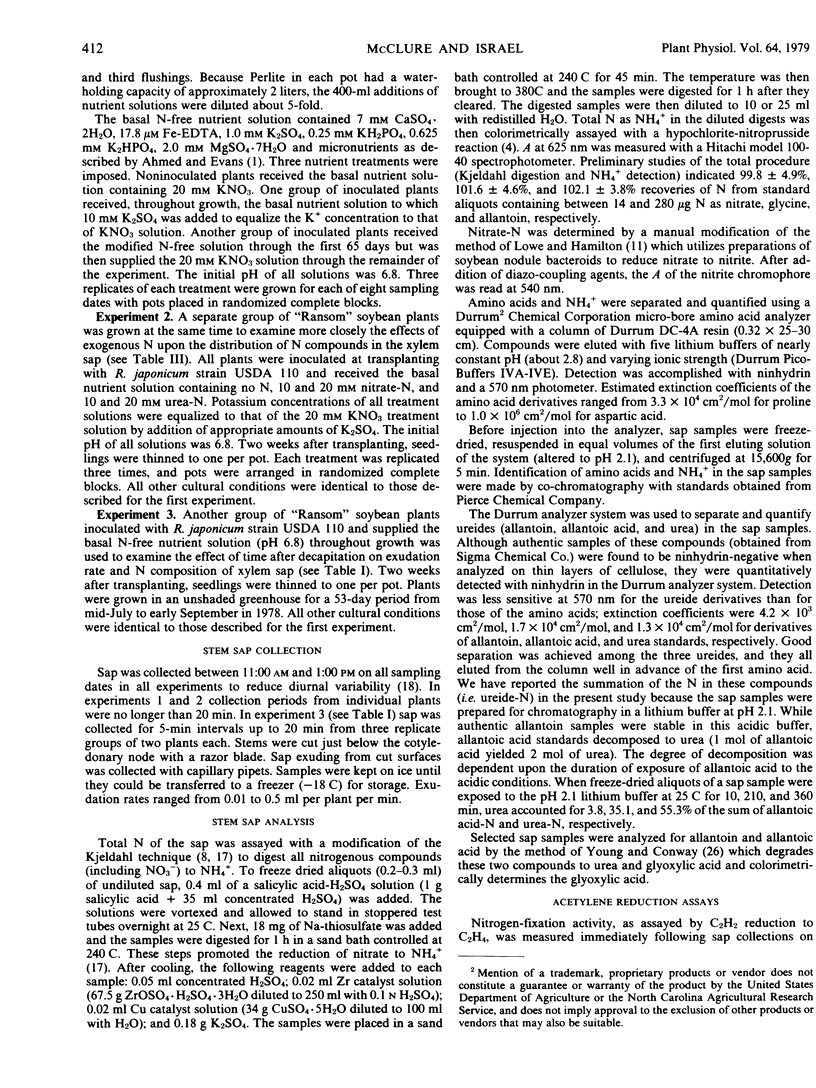
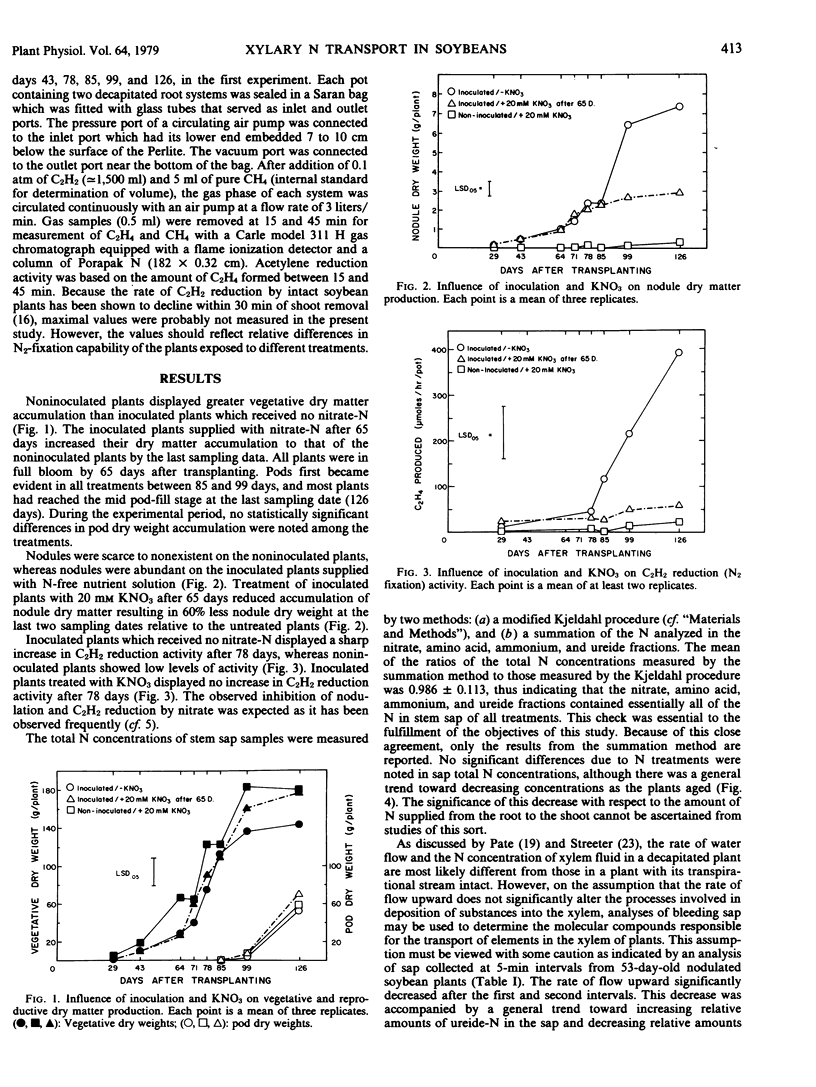
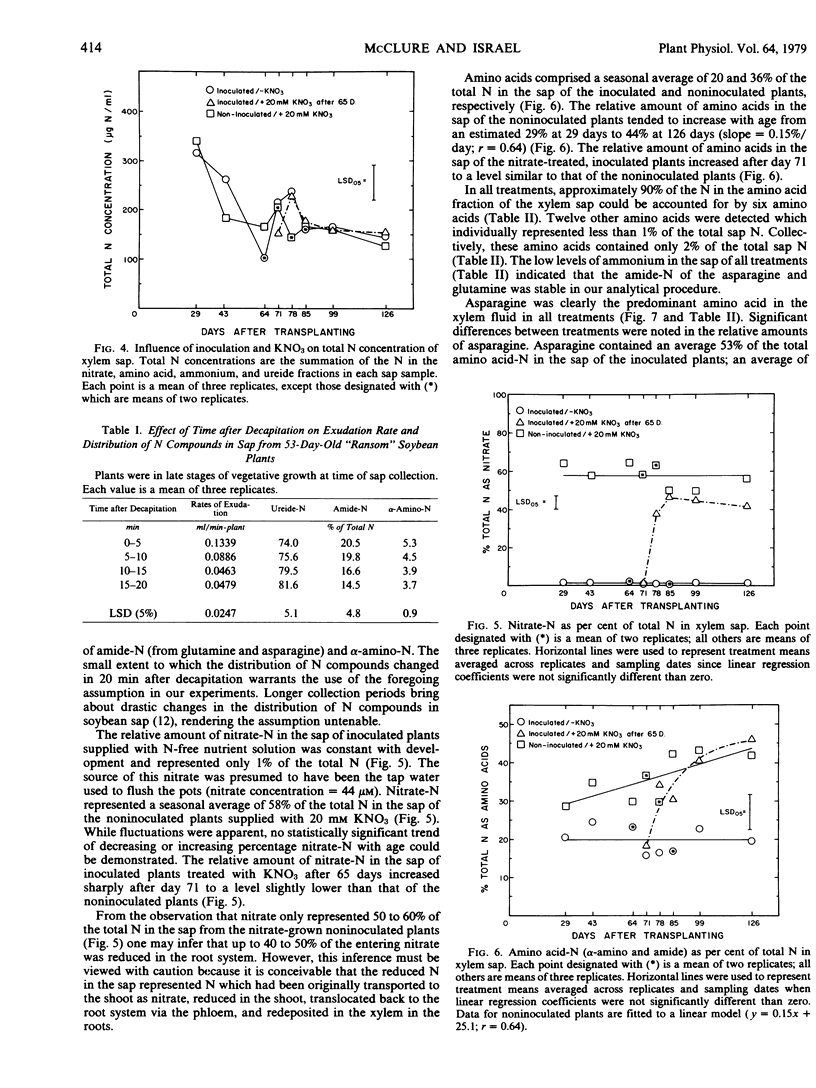
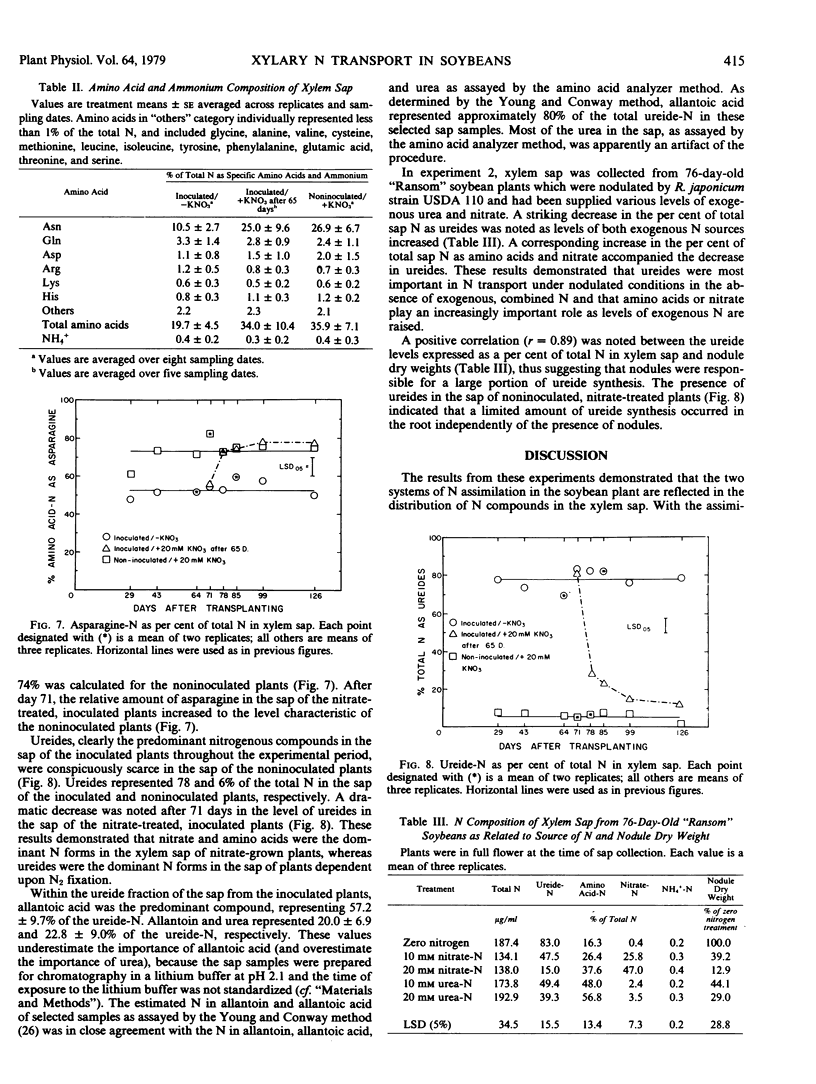

Selected References
These references are in PubMed. This may not be the complete list of references from this article.
- Bongaerts G. P., Vogels G. D. Uric acid degradation by Bacillus fastidiosus strains. J Bacteriol. 1976 Feb;125(2):689–697. doi: 10.1128/jb.125.2.689-697.1976. [DOI] [PMC free article] [PubMed] [Google Scholar]
- Fujihara S., Yamaguchi M. Effects of Allopurinol [4-Hydroxypyrazolo(3,4-d)Pyrimidine] on the Metabolism of Allantoin in Soybean Plants. Plant Physiol. 1978 Jul;62(1):134–138. doi: 10.1104/pp.62.1.134. [DOI] [PMC free article] [PubMed] [Google Scholar]
- Herridge D. F., Atkins C. A., Pate J. S., Rainbird R. M. Allantoin and Allantoic Acid in the Nitrogen Economy of the Cowpea (Vigna unguiculata [L.] Walp.). Plant Physiol. 1978 Oct;62(4):495–498. doi: 10.1104/pp.62.4.495. [DOI] [PMC free article] [PubMed] [Google Scholar]
- Mederski H. J., Streeter J. G. Continuous, automated acetylene reduction assays using intact plants. Plant Physiol. 1977 Jun;59(6):1076–1081. doi: 10.1104/pp.59.6.1076. [DOI] [PMC free article] [PubMed] [Google Scholar]
- ROUSH A. H., SHIEH T. R. Diffusion, active transport and metabolism of purines in the yeast Torulopsis candida. Biochim Biophys Acta. 1962 Aug 20;61:255–264. doi: 10.1016/0926-6550(62)90088-9. [DOI] [PubMed] [Google Scholar]
- Streeter J. G. Allantoin and Allantoic Acid in Tissues and Stem Exudate from Field-grown Soybean Plants. Plant Physiol. 1979 Mar;63(3):478–480. doi: 10.1104/pp.63.3.478. [DOI] [PMC free article] [PubMed] [Google Scholar]


